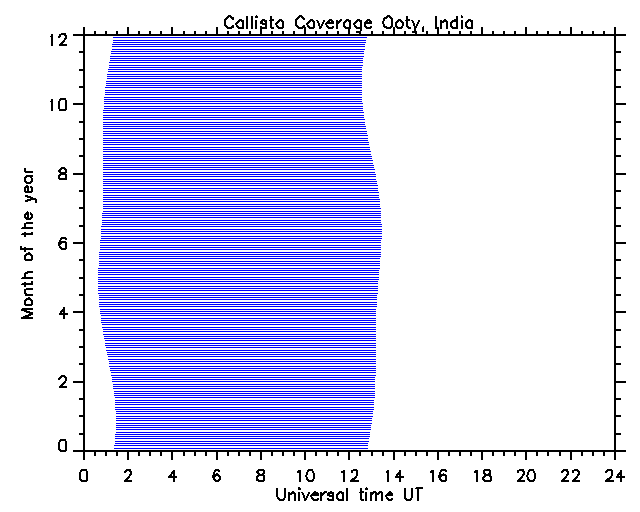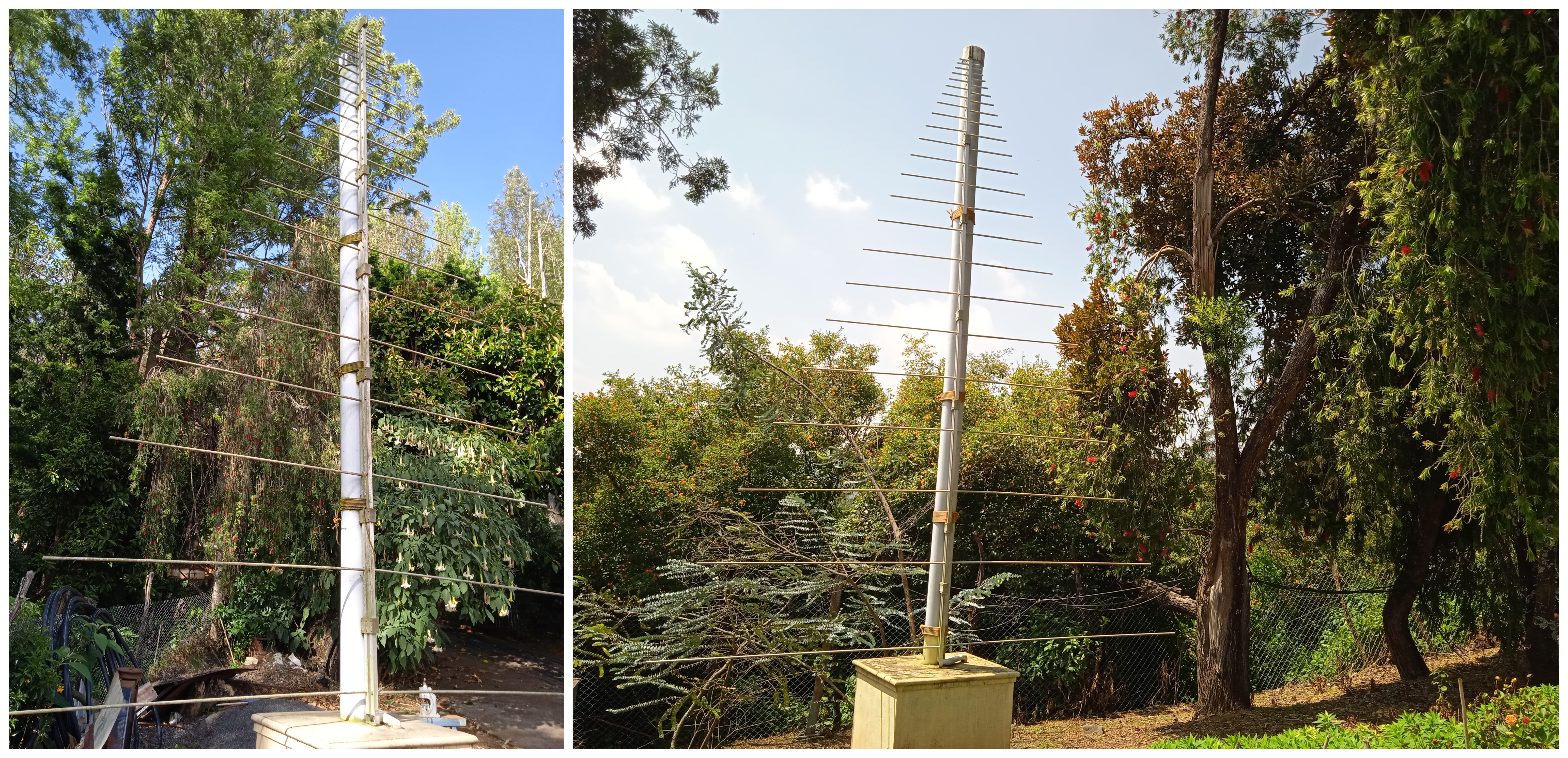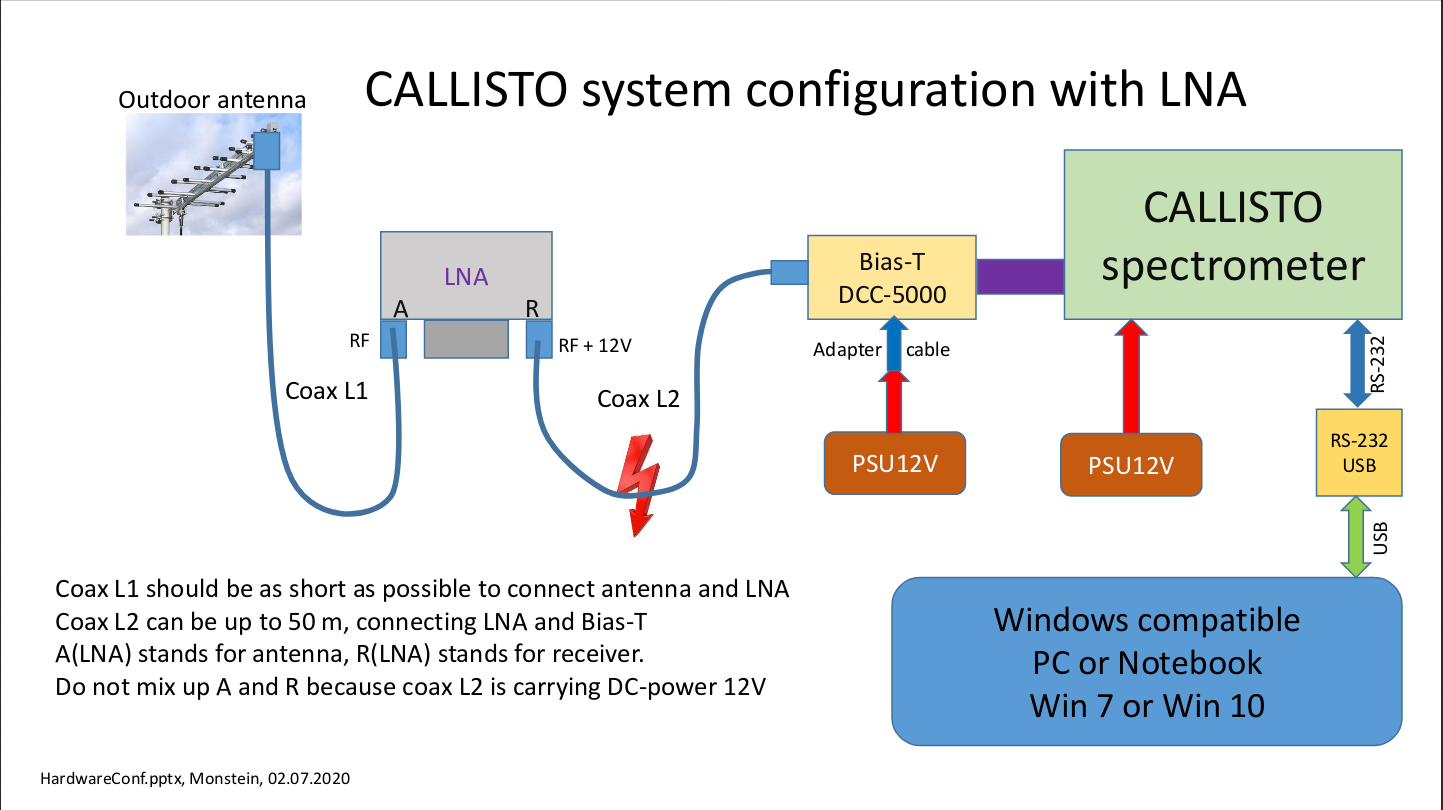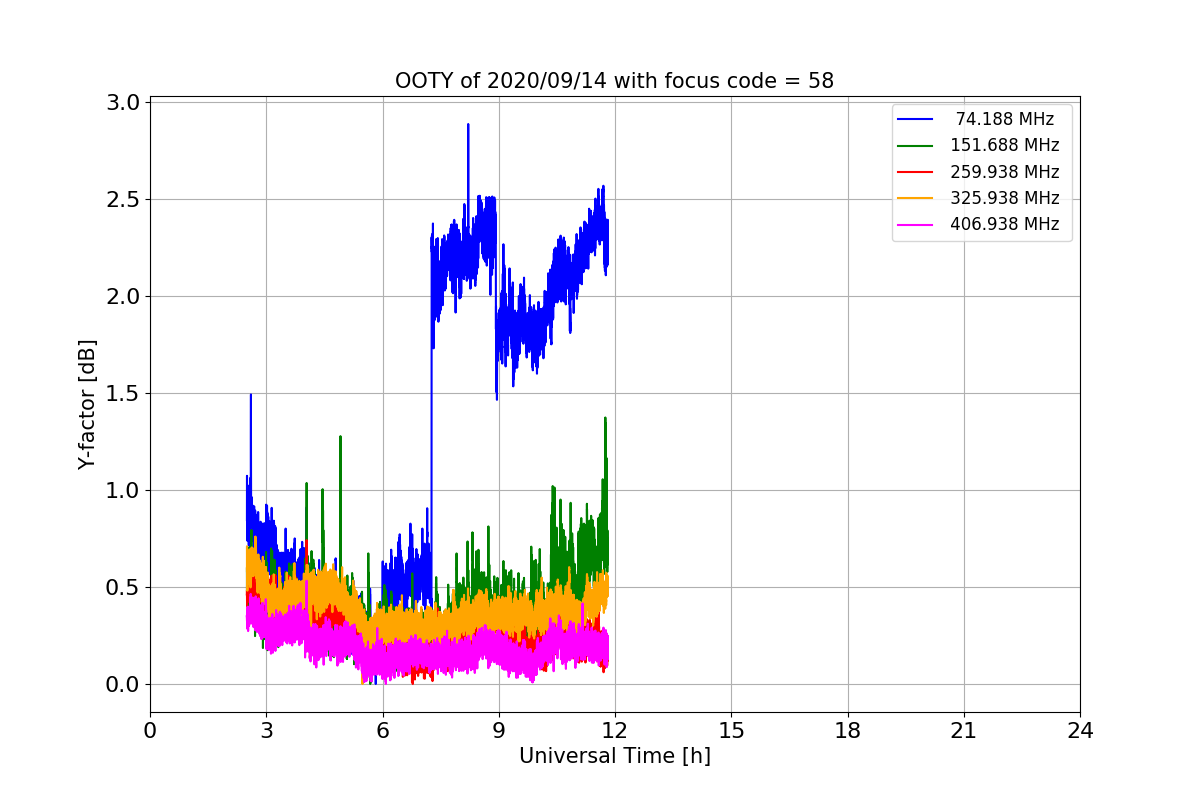Observing Coverage

Linear polarized log-per pointing to zenith.Observations 45 MHz - 450 MHz. File-ID = OOTY 2 instruments (FC=58, FC=59)

Compound Astronomical Low cost Low frequency Instrument for Spectroscopy and Transportable Observatory
The e-Callisto is an international network of Solar Radio Spectrometers. The hardware and software of Ooty e-Callisto spectrometers were developed by the groups at Institute for Astronomy, ETH Zurich and FHNW Brugg/Windisch, Switzerland. The Radio Astronomy Centre (NCRA-TIFR) at Udhagamandalam(Ooty) maintains two of the spectrometers for observational facility.
The CALLISTO spectrometer is a programmable heterodyne receiver designed 2006 in the framework of IHY2007 and ISWI by Christian Monstein (PI) as member of the former Radio Astronomy Group (RAG) at ETH Zurich, Switzerland. CALLISTO is an artificial word, composed as 'Compound Astronomical Low frequency Low cost Instrument for Spectroscopy and Transportable Observatory'. The main applications are observation of solar radio bursts for astronomical science, education, outreach and citizen science as well as rfi-monitoring.

Antenna-58 and Antenna-59 installed at Radio Astronomy Centre

Hardware Configuration of Callisto System
Callisto can be used for a large variety of experiments and studies of radio signals in the
range 45 MHz to 870 MHz. Other frequencies can be observed by switching in a
heterodyne/homodyne down-converter or an up-converter between antenna and
Callisto.

Linear polarized log-per pointing to zenith.Observations 45 MHz - 450 MHz. File-ID = OOTY 2 instruments (FC=58, FC=59)

Copyright © 2023 - All Rights Reserved - Radio Astronomy Centre